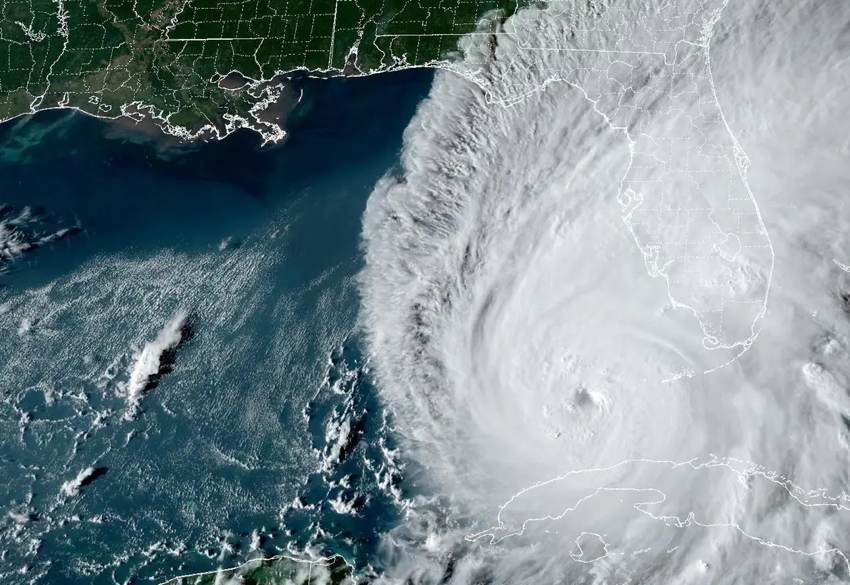Hurricane Ian: Good chance industry loss over $20bn, says BMS’ Siffert

Major hurricane Ian is likely to deliver an insurance industry loss of greater than $20 billion, according to BMS Senior Meteorologist Andrew Siffert.
In an update published just now, Siffert said that there is little in the historical storm analogs to compare hurricane Ian too now it has intensified into the monster storm it has become, and that the insurance and reinsurance marker faces a really serious loss from the storm.
Siffert explained that, “Estimating the damage from Ian will be difficult and a time-consuming process. The storm surge will no doubt complicate factors. Recently, Irma caused over $30B in insured losses to the state of Florida.
“There is minimal historical precedent for a storm of this magnitude, even considering the October storm of 1944, which today would run $35B in insurance industry loss. This storm tracked up over the heavily populated I-4 corridor between Tampa and Orlando. Ian is expected to track just south of this line with the strongest winds inland over a more rural area, but the 1944 track is still within the NHC cone of uncertainty. The storms of September 1894 and October 1873 impacted the area, but there is greater uncertainty in understanding those impacts.
“Given the increase in intensity at landfall projected yesterday, there is a good chance that the insurance industry is once again staring at an industry loss greater than $20B. This does not count litigation amplification that could result.”
Siffert also highlights that Ian is a very different storm to 2004’s hurricane Charley, so shouldn’t be likened to it.
He said, “Sure, Charley was a 145 mph high-end Category 4 hurricane, but it was fast-moving at 20 mph; Ian is expected to be moving at 8 – 10 mph at landfall. This will prolong the damage from winds from Ian vs Charley. The other significant difference was that Charley’s radius of maximum winds was estimated at 7 miles. Ian’s radius of maximum winds is current 20 miles, and the wind field is much different, with hurricane-force winds extending 60 miles out from the center of the storm. This is a more average-sized hurricane for its intensity.
“Charley was a small storm, meaning the storm surge was much less. The storm surge was 7 feet or less for only a tiny part of the southwest Florida coastline. Ian storm surge is expected to be 12 feet or higher; frankly, no one alive in the landfall areas has ever seen a storm surge of this magnitude.
“Given the overall size difference and slower moving movement, Ian will not be in much hurry to cross the state like Charley did. This means that impacts will be prolonged compared to the quick blast from Charley. And although the wind gust is what causes the direct damage to a building, prolonged winds of tropical storm force can also increase damage and increase power outages and tree damage.”
Siffert also highlights the potential for east coast impacts after hurricane Ian emerges back over the Atlantic, something we’ve been highlighting in our updates today.
“”With all the attention on Ian’s Florida landfall and it’s potential impacts, which are outlined well by the NHC, and include rainfall, storm surge, wind impacts, and tornado effect, one thing that should not be overlooked is the effects that could occur to parts of the east coast of Florida. There is increasing concern that Ian will reemerge off the east coast of Florida. This will likely cause an increase in storm surge risk up into the St. John River and wind and beach erosion along the coastline from Flager Beach to points north. A few forecast models predicted Ian to regain hurricane strength over the warm waters of the gulf stream and have a secondary landfall between Tybee Island, GA, and Charleston,” he explained.
$20 billion seems a safe starting point for the industry loss range from hurricane Ian.
The top-end insurance and reinsurance market loss estimate still seems likely to be up to $40 billion, unless hurricane Ian causes more damage than expected to metro areas like Orlando as it crosses Florida, or causes a larger than expected loss when making a second landfall on the US south east coastline.
If either of those scenarios occur, then you could look higher than $40 billion it seems.
It’s worth noting there are some modelled estimates out there that go higher than this, but at this stage it seems a little early to do any more than provide a sensible range for people to work from and this is the range our sources are most commonly suggesting now.
For the latest on hurricane Ian visit our recent article here, or our 2022 Atlantic tropical storm and hurricane season page.







